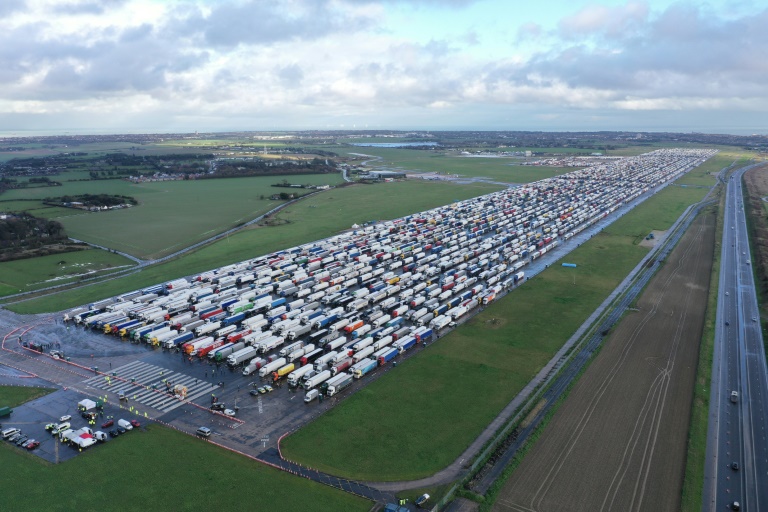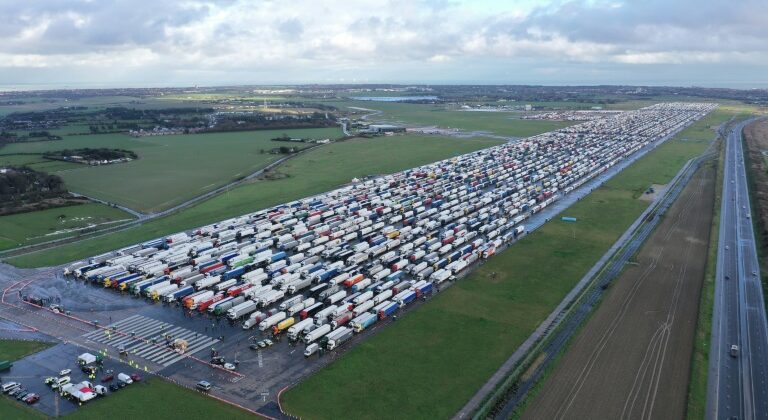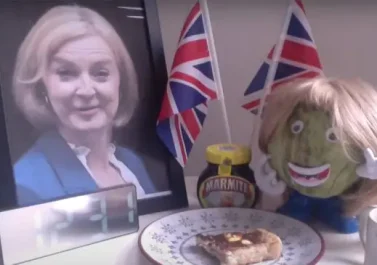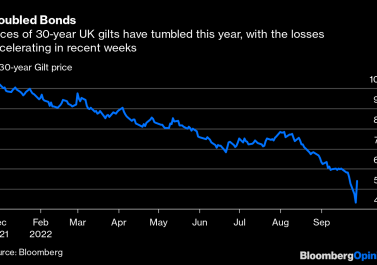
The UK has been hard hit by the Covid crisis, both in economic and human terms. When we started writing this article in January, the numbers of people who had died of Covid had passed 100,000. In 2020 the UK economy experienced a slump of nearly 10%, a 300-year record. The reasons for the severity of the crisis are pretty obvious: decades of austerity and outsourcing of public services, which has left departments to ‘track and trace’ Covid cases with outdated Windows Excel programs, resulting in thousands of results getting lost; a similarly degenerated political class that is incapable of holding the complex web of public and private science and health sector departments together, and instead dishes out contracts to their similarly incapable public school mates; an increasingly failing local state, which has only survived recent years through an ever tighter entanglement with the real estate bubble, and which now has to continue sacking front-line staff such as social and community workers; and last but not least, a fractured working class, on low wages and one of the most meagre sick pay regimes in developed countries. This forces many to continue working despite the health risks.
Here, the health and economic crisis are joined at the hip. An economy that depends heavily on a regime of long hours, low wages and low productivity is fragile and increases social inequality by continuing to squeeze people. Those living in poorer areas of the UK are 2.5 times more likely to die with Covid. While the household savings ratio increased by a record 20% amongst the middle- and high-income strata, debt amongst the working class has escalated.
But the authors of this article do not want to join the queue of lamenting leftists. Instead we want to see if the media was right when they proclaimed a new ‘Winter of Discontent’ in December 2020.
A strike wave?
During the last couple of months of 2020, we were indeed able to see an increase in strike threats or actual strikes, from Heathrow airport workers, British Gas and Rolls Royce staff to local teachers and DHL logistics workers. There are two main tendencies within this upswing of disputes. On one side, we can see that sections of the working class gathered confidence during the pandemic to ask for better pay and conditions and to refuse to work where it is not safe to do so. These struggles were primarily led by outsourced staff at the fringes of the public sector, teachers and health workers. On the other side, we see defensive struggles against a pandemic of attacks, where management uses ‘fire and rehire’ threats to ask workers to agree to job and pay cuts, or general flexibilisation of work. At British Gas, workers said:
“Previously we’d have both a summer roster and winter roster, giving us our working arrangements six months in advance. Now, they want to change that to six weeks’ notice. (…) We have to consider childcare costs. Just now our core hours are 8am to 8pm, but the new hours are 6am to 11pm.”
According to the GMB union, 1 in 10 workers in the UK were subjected to the ‘fire and re-hire’ threat. The majority of disputes belong to the latter, defensive category. One of the issues is that so far none of the strikes has become a focal point for other workers, based on the strike’s own strength.
Together with disputes at British Airways, the strike by Rolls Royce workers in Barnoldswick against plant closure and relocation of production to Singapore (to a company which supposedly belongs to the father of Rishi Sunak, the Chancellor of Exchequer) was probably the most widely reported struggle. What we saw were the usual signs of a defensive struggle: the trade union appeals to the state to keep ‘vital industries’ (vital, amongst others, to the army) in the country, due to ‘superior local skills and quality’. People were reminded of the fact that during the Second World War, the Lancaster Bomber was built in the area, which was used to ‘fight fascism’. The nine-week-long strike itself was defensive, and only 80 out of over 500 workers were out at each given strike day. Pickets were limited to six people and online events. Other Rolls Royce factories that were not affected by the direct threat of closure did not join the strike. Instead there was much nostalgic talk about the ‘local community’ and their support. In the end, the union could proclaim victory by ‘saving’ 350 jobs for at least two years (before Covid, up to 700 workers were employed on the site).
There have been less publicised, but perhaps more militant, disputes going on during the winter. For example, the response to attacks on the conditions of bus drivers. In London, 3,000 Metroline workers (a company also based in Singapore, but not directly linked to Rishi’s dad) balloted to go on strike against the introduction of a remote sign-on system. Remote sign-on means bus drivers start their shift at bus stops, rather than at the depot, which can result in an 8% pay cut. At Abellio, workers opposed a 1% pay offer. At Arriva, workers oppose a new shift schedule introduced during lockdown, which resulted in a 25% pay cut for Sunday shifts. At Go North West, 500 bus drivers opposed management’s plans to cut the workforce by 10% and to increase unpaid working hours for the remaining workers.
Here, the question will be whether bus workers manage to overcome the divisions imposed by the outsourcing and ‘privatisation’ of the last decades. In addition to these general challenges, striking under the Covid regime is not easy. In November, bus manufacturing workers at Optare in Yorkshire had to legally enforce their right to picket their workplace (with the already puny number of a maximum of six workers per picket) during the national lockdown. DHL logistics workers on strike in Liverpool were confronted with frequent visits by the police who wanted to enforce ‘social distancing’. After 10 days of strike they accepted a 3% pay ‘increase’.
With the lockdown-related increase in the use of Zoom and other online-meeting technologies, we also saw a certain boost in workers’ coordination. In some cases this happened on a fairly informal level. A midwife we interviewed reported that online forums that were previously used to exchange medical knowledge amongst nurses turned into a medium to exchange information and views about which tasks to perform under Covid and which not, how to deal with management, and the lack of PPE. We also interviewed a London tube driver who said that since union branch meetings happen via Zoom, up to ten times more workers participate. This, and other informal channels have helped to enforce that daily shift times were reduced from 8 to 4 hours during the first lockdown, with full pay.
In January the teachers’ union organised the biggest online meeting in UK history, which was attended by around 80,000 union members plus up to 100,000 further participants, around the question of whether teachers should oppose the re-opening of schools despite increasing numbers of Covid cases. This mass meeting helped force the Johnson government into yet another u-turn, as contrary to the state’s initial plan, schools remained shut. We also see a new rank-and-file initiative ‘Nurses United’, which tries to coordinate a nation-wide pay campaign. Currently 50,000 NHS workers are off sick or in self-isolation, on top of a general shortage of workers. This means the specially-built emergency ‘Nightingale’ hospitals remain empty, despite the spike in cases. Another spark of resistance against the Covid regime were various local rent strikes by students, often coordinated through social media, although in Manchester the protest was centred around the occupation of a university building.
Larger demonstrations in summer, in response to the murder of George Floyd, were not directly related to the lockdown, but to repressive state measures in general. In London, we could see that a younger generation of inner-city working class youth disobeyed the ‘demonstration ban’ by the official ‘black community organisations’ – a sign of simmering discontent. Last, but not least, the current proliferation of disputes led to new strike-focused projects, such as the ‘Strike Map’, which aims to document struggles and to help link them up. The problem is that there is an over-reliance on the ‘official version’ by the trade unions, and a lack of real insights into the strength and weaknesses of the struggles of our class. Overall, these are hopeful new developments, but they will have to be backed up by our rebellious physical collectivity. As a collective, we participated in two strikes recently, which allowed us at least to a certain extent to look beyond the official declarations.
Two experiences: the Heathrow airport and Tower Hamlets council workers’ strikes
The dispute at Heathrow started with the announcement of British Airways (BA) to sack around 10,000 workers, nearly a third of its staff, and to impose pay cuts on the rest. [1] The campaign of Unite the Union was primarily symbolic, appealing to the government to intervene and to stop ‘BA’s betrayal of Britain’. On the shop floor, the union did little to overcome divisions, e.g. flight attendances of different bargaining units made deals with management that undermined a united response. On top of these intra-union divisions, the fact that there are multiple unions ‘representing’ workers creates an additional hurdle. Two further problems aggravated the potential for a collective response. Negotiations and legal manoeuvres delayed the strike beyond the crucial summer months. The first strike happened on the 1st of December. By that time, many workers were furloughed – a pretty weak position if you want to go on strike. The legal divisions also meant that although the majority of BA workers, Heathrow workers and BA Cargo workers are organised in Unite, their strikes were organised separately.
One of our comrades works as a maintenance engineer for a subcontractor of BA and other former workmates drive trucks for BA Cargo on the airfield. We prepared a leaflet and strike newsletters emphasising the need for an independent workers’ coordination beyond professional and union boundaries. We visited various picket lines and locations at the airport during the strike days. The first problem was that due to the legal restrictions and lockdown rules, the pickets were far away from the actual airport terminals and small in size. In the case of the BA Cargo strike, the union called workers to stay at home and didn’t organise any official pickets. We spoke to various groups of workers. Guys from Airside Safety, responsible for clearing runways from debris etc. told us that, although a strike of around 100 workers in their department could theoretically bring the whole operation to a standstill, the fact that the workforce was divided into three different unions, and that two of those weren’t on strike (Prospect and the PCS union), meant that management could render the strike relatively ineffective. During the strike days, the airport was pretty full and according to the Heathrow flight schedule at least, there were no major cancellations or delays. Another issue is that many of the subcontracted workers (baggage handlers, cleaners, security etc.) are not represented by any union – which doesn’t mean that they are not similarly, if not more pissed off. We spoke to guys at the central bus depot who just came from their shift and who didn’t know that a strike was on!
Another problem is major pay differentials depending on seniority and contract. A friend who works at BA Cargo told us that although most of the newer staff walked out, there is still a feeling that they are under-represented and that the strike was mainly about protecting the old contracts. Although the old guard on the night shift stand to lose £11,000 and workers with 20-year seniority stand to lose £8,000, these are still amounts that newer starters never had in the first place. As is the case elsewhere at Heathrow, workers that have been there a long time also often occupy the easier jobs and the better shift patterns. In this instance, it’s believed the timing of the strike at Christmas and the £70 a day strike fund, may have been enough to get newer starters on board with the strike.
BA’s onslaught is made all the more outrageous by the fact that these workers have shipped 12,000 tonnes of PPE into the country to help deal with the pandemic. In the Cargo workers case, the nine days of strike during the end of December came at the right time, when shipping port facilities in the UK and in many other countries were massively overstretched. This might have been one reason why the next round of strikes at the end of January were called off after management decided that workers would retain their old contracts. This can be seen as a success. The problem is that while BA Cargo workers go back to work, Heathrow ground staff workers are supposed to start their new strike days – without the material clout of a booming cargo division on strike. We managed to gather a few more contacts amongst fellow Heathrow workers, but overall the isolated character of the strike prevailed.
Another comrade works for Tower Hamlet Council, one of the most deprived areas of the UK. On the 3rd of July 2020, Tower Hamlets broke a Covid pandemic ceasefire with its workers by firing most of them – around 4,000 people – and rehiring them on worse contracts. The attack, branded ‘Tower Rewards’ by the council and ‘Tower Robbery’ by everyone else, affected workers in administration, schools, housing, social care, drug and alcohol services, youth services, street cleaning and libraries (or ‘Ideas Stores’ as Tower Hamlets calls them). Instead of the all-out strike members voted for, UNISON’s regional officers watered the action down to three limited strikes of three days each – two for July and one for August. The strike call applied to around 1,500 workers across council departments like social care, schools and housing support. Workers represented by the other main council unions – Unite, GMB and NEU – didn’t strike, although on some days, refuse workers and school bus drivers respected picket lines by refusing to drive out of their vehicle depot. This was, in fact, the only true picket of the strike. The others were more like small street demonstrations outside buildings that were closed or largely empty due to pandemic working arrangements and restrictions.
As a collective we tried to create links through leaflets and meeting points at pickets. There are bright sparks in the gloom. One section of social workers organised a series of independent forums to discuss collective grievances. They successfully put forward demands for more pay, backdated in line with the contracts being offered to new workers. They did it collectively and directly, without going through the UNISON machine. The problem is that the ‘best organised’ social workers are also those who the council is most likely willing to ‘appease’ by material concessions, whereas the school dinner ladies and cleaners might lose out. UNISON is now recommending its members accept the new contracts. What happened in Tower Hamlets is a precursor for future disputes, as one council after the other announces ‘financial breakdown’, such as in Croydon, Liverpool and a dozen other councils in poorer regions.
The left: beaten by the centre and too wedded to the trade union line
You would think the fact that two, three hundred thousand people subscribed to the socialist program of the Labour Party under Corbyn in the last couple of years would make a big difference at this juncture. You would think that there would be lots of militants who would try and connect strikes and push them beyond their formal and legal confinements. For two reasons this is not the case.
Firstly, the left-wing of the party is still stunned by the quick knockout delivered by the Starmer-ist centre. Within a few months Starmer used the internal disciplinary apparatus (and the allegations of anti-semitism) to extort declarations of party loyalty from the left-wing and (not only) his close links to the intelligence service obliged him to support a new law, which gives undercover cops wider scope for legal and illegal acts. He presented the party as patriotic and supportive of family values. Labour criticised the Tories for considering raising corporate taxes to finance the Covid stimulus measures. Thus, Labour try to portray themselves as ‘economically responsible’. The Labour opposition went back on its word to propose a Covid debt cancellation for bankrupt countries in the global south. All this sent the left activists into a political depression. But its not only the party leaders that have been disappointing. The union leaders have also let them down: the GMB boss Tim Roach was fired recently for sexual harassment and cocaine use. Unite boss Len McCluskey, one of Corbyn’s closest allies, is under criminal investigation for real-estate-related corruption.
Secondly – and this might turn out to be a permanent issue – the ‘socialist left’ in the UK is (traditionally) so closely wedded to the trade unions that they have little imagination about what workers could do ‘outside the box’. This means that we mainly hear and see ‘solidarity messages’ or sympathetic flag-waving – there are hardly any detailed reports or reflections on the strikes, and no strategic proposals. Most leftist articles on any strike emphasise how ‘nice’ the strikers are, how they help local food banks – hardly anyone asks the question ‘does the strike hit the enemy where it hurts – and if not, why not’?
Speaking of the UK’s ‘Winter of Discontent’ in 1978-9, the Labour left has a conflicted relationship with this historical event. A common view is that the problem during this period was not that workers lacked independent coordination to overcome sectoral limits and advance the struggle, but that the media over-emphasised the impact of the strikes (no refuse collection, energy cuts etc.) in order to prepare the path for Thatcher. Here we can see perhaps a gap opening between those on the left who mainly focus on the official political area, and many ‘working class trade union leftists’ who are more connected to the actual disputes.
We ourselves have to discuss how workers’ struggle can overcome the structural limits set by the crisis, how to fight with our backs to the wall. In the case of Heathrow, how could you forge a link between those workers in the ‘booming’ section (cargo) and the declining one (passengers)? What do you propose to the majority of ‘non-unionised’ outsourced workers? What would the general line of, ‘we all work, we all work less, we all decide what work we do’ mean at a point in time where the state-run furlough system and company management can decide who has to stay home and who not? How can you refer to the fact that during the initial lockdown, many workers rediscovered the question of ‘workers’ control’: who decides how we work safely, who decides what work is essential and what not? What does it mean if ‘life goes on’ even if nearly half of the population does not work – and why are those who pull us through the pandemic (health-, food- and other essential workers) so overworked? In the case of Heathrow, how can we refer to the confidence that key workers gathered during the lockdown in a sector that contributes to the climate crisis? As a collective, we tried to raise all these points in the strike newsletters, in combination with questions of immediate relevance for the strike. We also started an interview series with co-workers from various sectors about their current experiences at work and under attack.
Outlook: Workers, leaving, money leaving, only the pigs remain
Like in any country, the state in the UK is in an uncomfortable situation. Both the capitalist class and the working class focus their ‘economic demands’ on the state, and thereby politicise what is usually left to the mystical market forces. This poses a challenge of regulation. A sudden closing of the money tap could cause chain reactions of bankruptcy, where local governments and real estate, retail businesses and the personal credit market are all closely linked. At the same time, they will have to let the ‘cleansing’ force of the market work to weed out unprofitable businesses and re-impose economic discipline on both capitalists and workers. A sudden rise in visible unemployment would be a political risk, in particular after a decade of talk about the liberating properties of automation and a ‘service-centred’ economy. In 2020, unemployment rose by around 420,000 to a still pretty low 6%, although it is 15% among young people. We can imagine how much quicker this rate would rise once the furlough money dries up. As if that wasn’t difficult enough, the uncertainty about how Brexit will actually play out comes into the mix. Ironically, in January the UK government pissed off corporate representatives by saying that each company will not receive more than 4 million Euros in grants. The government’s excuse was that they had decided to stick with certain EU state-aid rules – even though the UK has left the trading bloc. What will happen once the UK state stands naked and cannot deflect and blame the EU?
Perhaps a hint is that everyone seems to want to leave this island! In 2020, around 1.3 million ‘foreign born’ people left the UK, more than half of them from the Greater London area. That would be 10% of London’s population gone. While some of them are foreign students who leave closed universities, many of them will have been part of the ‘essential workforce’. But not only labour is leaving – capital is too. The unclear framework for London’s post-Brexit role as a financial centre has resulted in a loss of 6 billion Euros in euro-denominated daily trading to venues in the EU. Share trading has increased four-fold in Amsterdam since December 2020 and Amsterdam overtook London as Europe’s main share trading centre. The sports-clothing company JD announced it was opening a new central distribution centre in Europe, rather than the UK – in order to avoid increased export costs. And Scotland is also on its way out!
After Brexit, only the pigs (and a few other farm animals) remain on this island: in January over 100,000 pigs meant for live export to the EU were stuck here, due to their decline in price competitiveness compared to EU pigs. Meanwhile workers at Quorn in Teeside, one of the biggest vegan meat factories, were on strike for higher wages. (Two probably unrelated facts.) Many companies now feel the pinch of higher export and manufacturing costs. Automobile companies in the UK are calculating 2% higher manufacturing costs. For small companies, this figure will be much higher. In January 2021, UK exports through the shipping ports were said to be 68% lower than in the same month in 2020.
Another twist of irony is that government bodies themselves are now advising British businesses that export to the continent to set up separate companies inside the EU to get around the extra costs, paperwork and taxes resulting from Brexit. In this sense, the ‘vaccine wars’ in January over the supply of EU-manufactured vaccines to the UK was perhaps more than a glitch – but an awkward dress-rehearsal for future trade disputes. The question here is if the UK just undercut the ‘level playing field’ – by paying more per vaccine and thereby hoovering up the EU market – or if the UK political class actually takes the post-Brexit ‘on-shoring’ and ‘re-industrialisation’ strategy seriously. The FT writes: “In 2020 Britain had just one plant in Liverpool making seasonal flu jabs and another in Scotland making a niche product. Everything else was imported. Now four companies are making, or preparing to make, Covid-19 vaccines in the UK.” Is this more than just hype?
However limited each of the disputes were, the ‘moderately tempered winter of discontent’ will have contributed to the government’s decision not to touch some basic EU work regulations for now, including the 48-hours maximum working time directive (which most of us have to sign out of anyway, if we want to get the job). It is probably not far-fetched to think that the ruling class is fearful about the moment when the blanket of the lockdown is lifted, and people face this mess in a more unrestricted and uninhibited way. There definitely won’t be a ‘return to normal’.
[1]
Read more about our interventions at Heathrow airport and during the Tower Hamlets strike.



